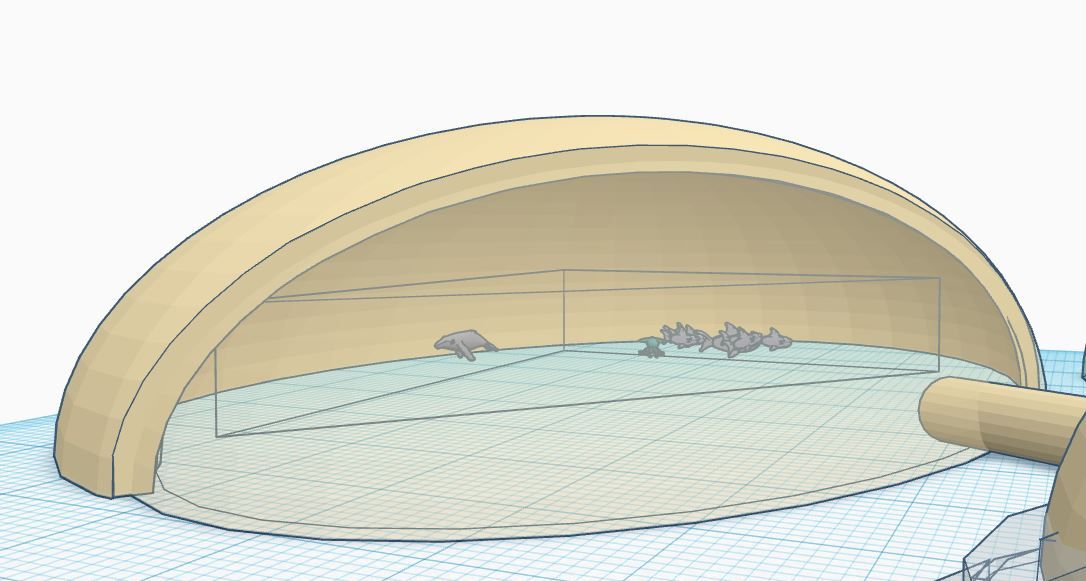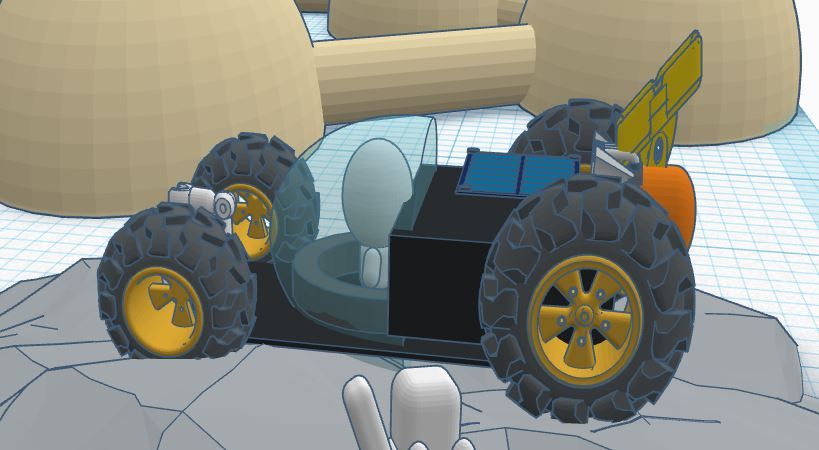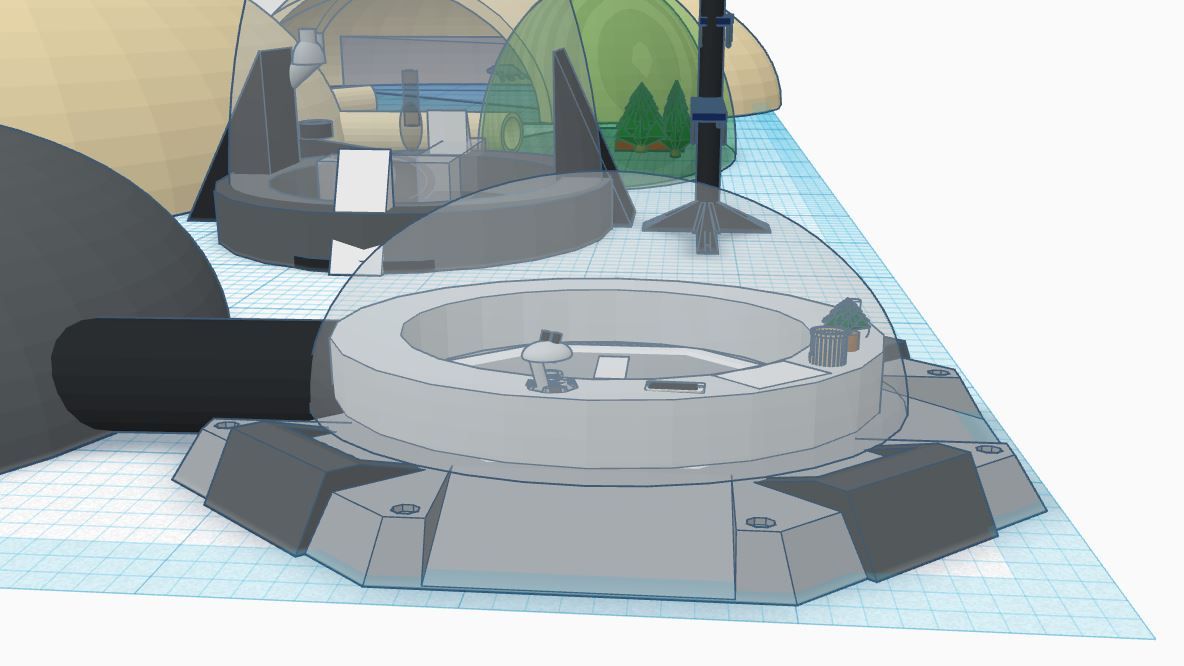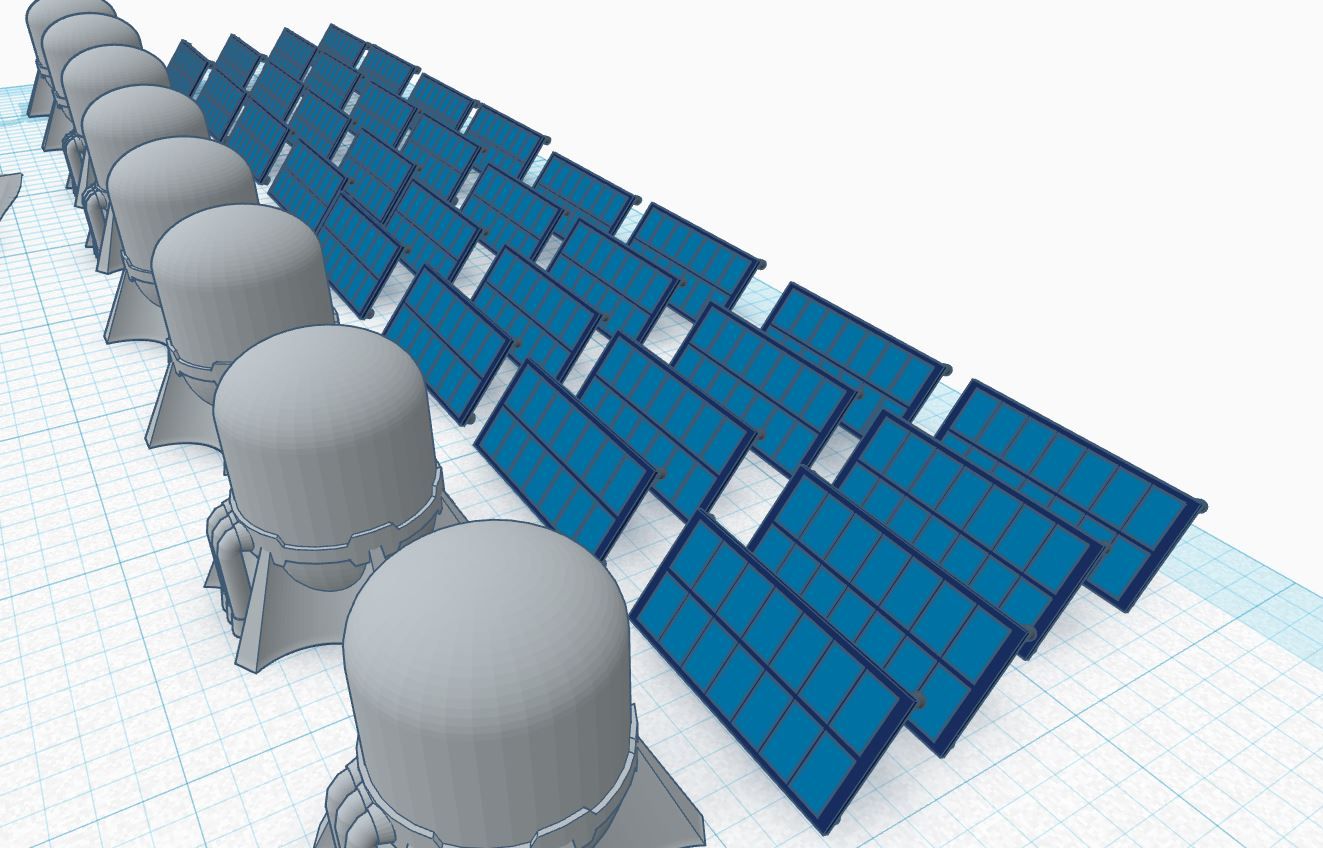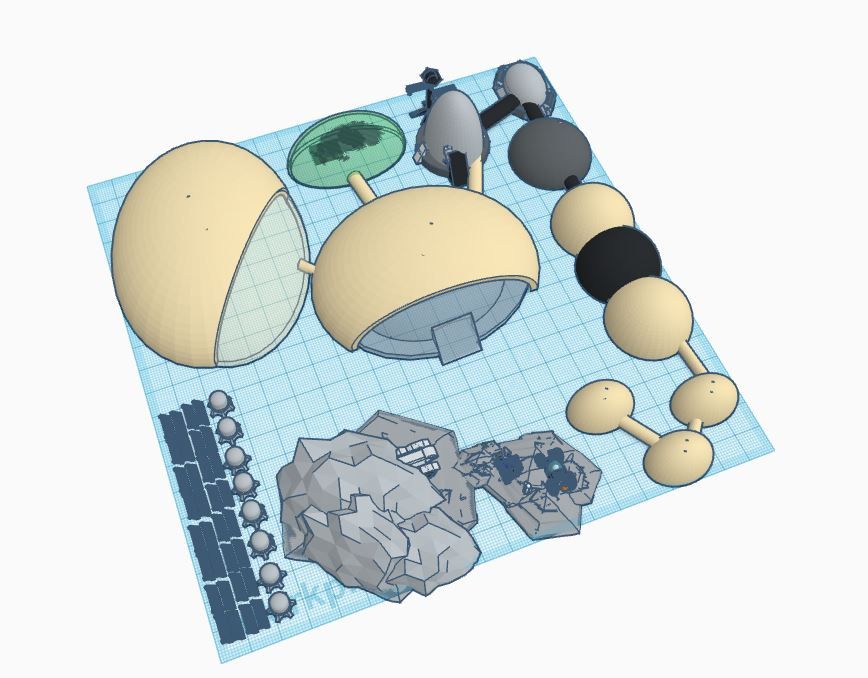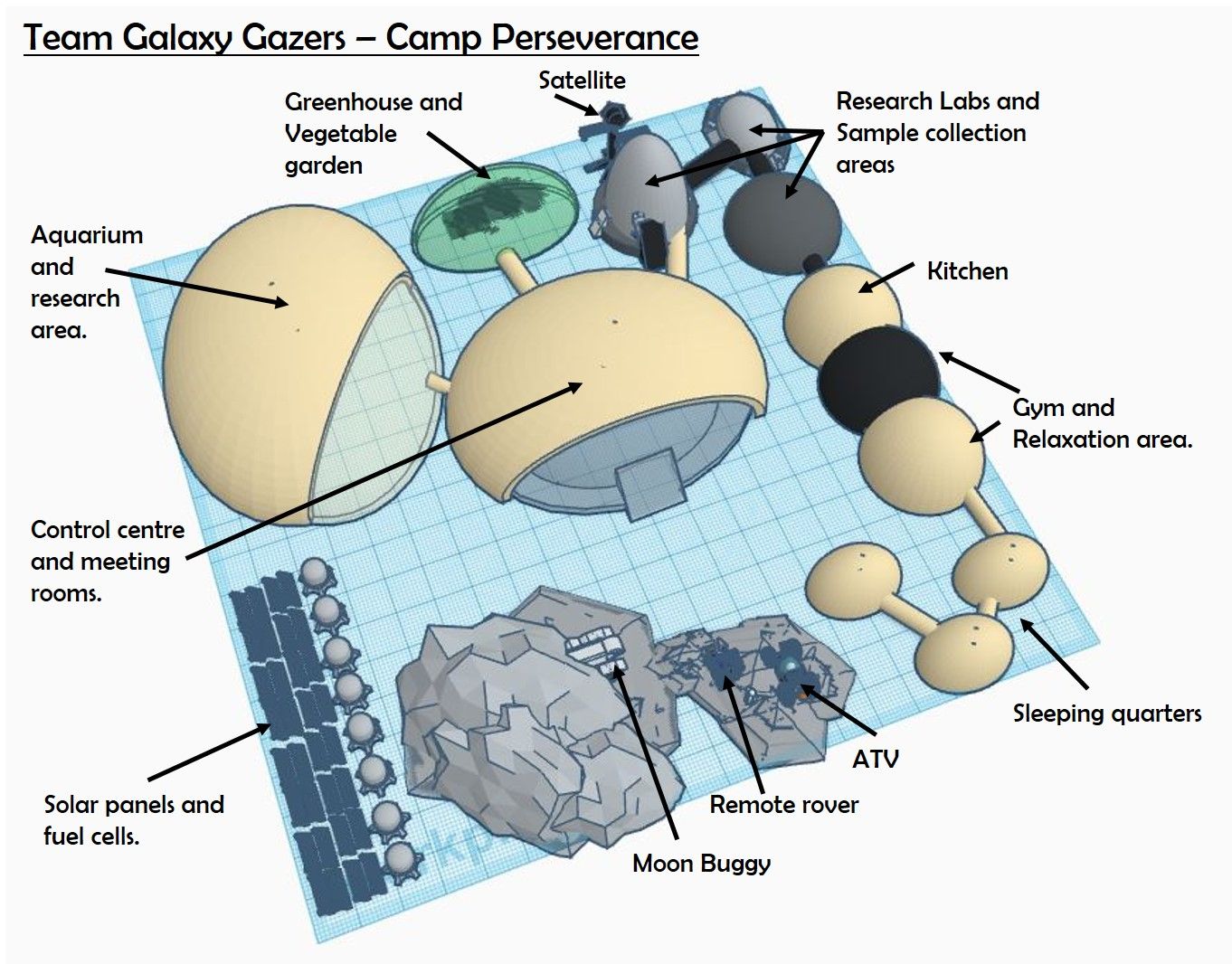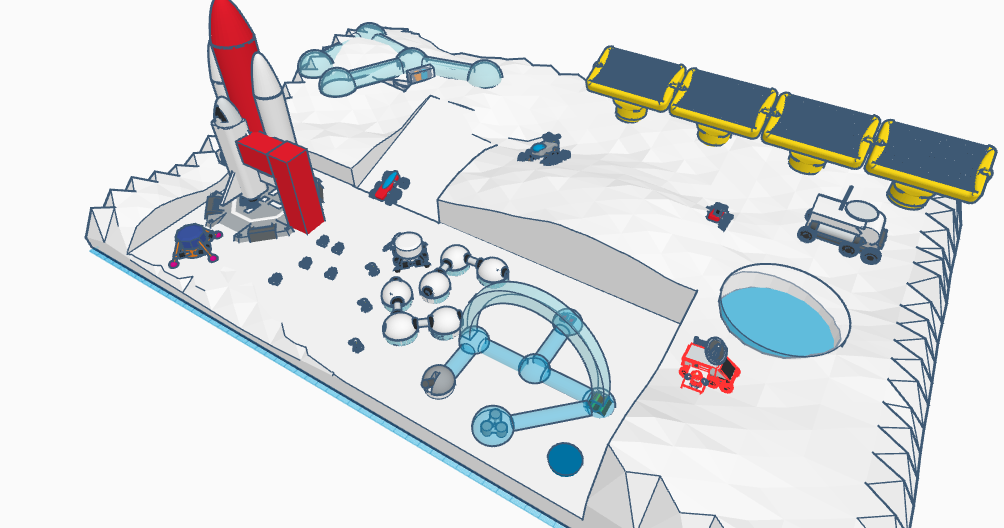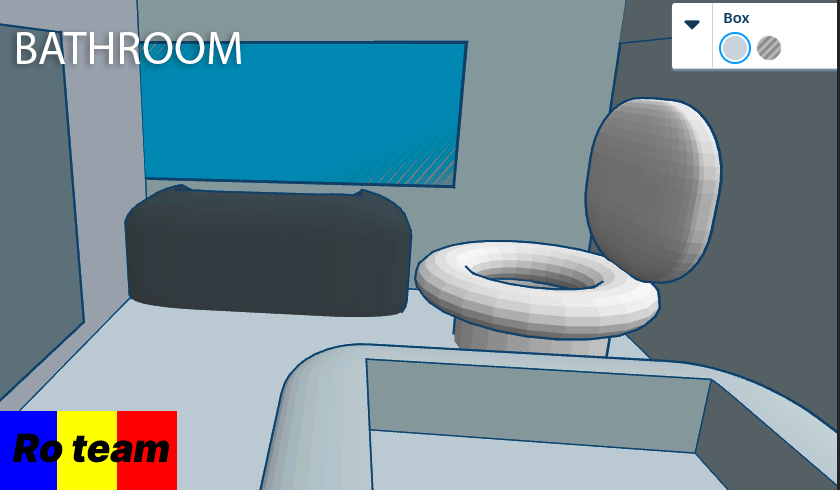Moon Camp Explorers Gallery 2021-2022
In Moon Camp Explorers each team’s mission is to 3D design a complete Moon Camp using Tinkercad. They also have to explain how they will use local resources, protect astronauts from the dangerous of space and describe the living and working facilities.
Team: Galaxy Gazers – Camp Perseverance
The March Church of England Primary School Chichester United Kingdom 9, 10 5 / 2
External link for 3d
|
Project description
Moon Camp Perseverance, named after the newest Mars rover, is the start of a bigger camp for testing rovers for other planets and for searching for life on the lunar surface. It can sustain 4-5 people, 1-2 scientists, 1 doctor, 1 mechanic and 1 13 year old child to see how we evolve on the moon. We will have robots sent up in rockets sent up by the ESA to assemble the camp before humans arrive! Camp Perseverance. As a group of 5 we got set a task of designing a moon camp base to be able to sustain life on the moon .We have talked about how big we wanted the community to be. Our group came up with brilliant ideas of living space, food, green house, research facilities, medical unit, observatory and a gym. While we are on the moon we will be sending samples such as moon dust, rocks, core samples and satellite images back to our team at the ESA to explore and discover extraordinary things. |
||||
|
Where do you want to build your Moon Camp?
Close to the lunar poles Why did you choose this location?
We have chosen this location because the temperature is the best possible for humans to live in. We have based our camp at Mare Humboldtianum, near the poles. The mountain range that surrounds it will provide some protection for our crew and camp. How do you plan to build your Mooncamp? Which materials will you use?
We will use moon rovers and robots to build the base of the camp from Titanium because it is extraordinarily strong. It can withstand hot temperatures and is resistant to rusting. For the greenhouse and Aquarium, we will use Polycarbonate because it is transparent and 30 times stronger than acrylic. It is easy to mould at either high or low temperatures. For most of our camp we will use the above materials as well as Tungsten for some of the interior. Our moon rovers will be made on Earth. They will be made from titanium and will have oxygen tanks and solar panels as well as fuel tanks. |
||||
|
Water
|
Food
|
Electricity
|
Air
|
Protection
|
|
At first we will bring water from earth that will last 5 days and that will give the crew enough time to create the a robot that will convert the moon dust and lunar ice into water. We will then work on a filtration system that will filter urine and turn it to water and enable it to be used within camp. |
First we will bring freeze dried astronaut food and then our crew will grow their own food in our greenhouse and will breed fish and squid in the aquarium to provide food. We will research if animals might survive on the moon and will try keeping some. |
We have lots of solar panels and will store the energy generated in fuel cells and then we will have a water mill to generate electricity but this will be once we have started to recycle our human waste. |
We are going to take oxygen tanks with us to the moon and then we will make oxygen from our trees and plants in our greenhouse and we will use robots to take the oxygen out of lunar soil. Then we will store it in tanks for use when we need it. |
Our location in the Mare Humboldtianum near the lunar poles will provide a substantial amount of protection for our camp. The mountains that surround it will provide protection from some meteor showers. Our camp will mostly be built from titanium on the outside which is strong and will provide more protection. |
|
Describe a day on the Moon for one of your Moon Camp astronauts
We are going to keep the hours on the moon the same as on Earth to help with communication and body clocks! This is a typical day for one of our research scientists. 07.00 – wake up/ morning toilet and change 07.45 – morning exercise, stretch and wash 08.30 – Prepare breakfast 08.45 – breakfast (30 mins) 09.15 – Lab work 10.00 – Research sample collections 11.45 – Check camp. 12.30 – prepare lunch 13.00- lunch 14.00 – work in the greenhouse and lab 14.30 – Clean aquarium and note changes to animal behaviour. 15.00- Afternoon exercise 16.00- afternoon toilet 16.15- check camp boundaries 17.00 – prepare for dinner 17.30- eat dinner 18.30 – Communication with Earth 19.00- Satellite call home and exercise 20.00 – Check camp and airlocks. 21.00 – relax and wash 22.00 – evening toilet 22.30- go to bed. |
||||


